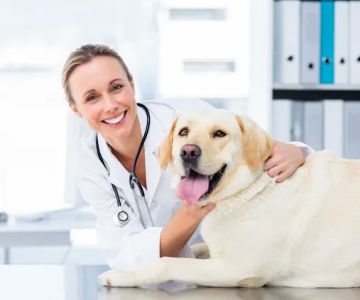The Best Care for Pets with Eye Problems – A Comprehensive Guide to Eye Health for Pets
As a pet owner, ensuring your furry friend’s health is a top priority. Just like humans, pets can experience various health issues, including eye problems. Pets with eye issues can experience discomfort, vision loss, or even long-term damage if not addressed properly. This article will discuss the best care practices for pets with eye problems, from understanding common eye issues to practical advice for managing and treating these conditions.
1. Common Eye Problems in Pets
Pets, especially cats and dogs, can suffer from a variety of eye problems. These issues can range from minor irritations to serious conditions that require medical attention. Understanding the most common eye problems can help you identify when your pet needs care and ensure that you are taking the appropriate steps.
1.1 Conjunctivitis (Pink Eye)
Conjunctivitis, or pink eye, is one of the most common eye problems in pets. It occurs when the tissue around the eye becomes inflamed, often due to an infection, allergy, or foreign body. Symptoms include redness, swelling, and excessive tearing. If left untreated, conjunctivitis can lead to more severe infections or scarring of the eye.
1.2 Cataracts
Cataracts are another common eye problem, especially in older pets. A cataract is a clouding of the eye’s lens, which can lead to partial or total vision loss. Cataracts often develop slowly and are usually noticed when pets start to show signs of poor vision, such as bumping into objects or having difficulty navigating in low light.
1.3 Corneal Ulcers
Corneal ulcers are painful sores that develop on the surface of the eye, often caused by trauma, infections, or dry eye. Symptoms include squinting, excessive tearing, and redness. If not treated promptly, corneal ulcers can result in permanent vision loss.
1.4 Glaucoma
Glaucoma is an eye condition that causes an increase in the pressure inside the eye, leading to pain, redness, and possible blindness. It is often a result of an underlying condition, such as inflammation or tumor growth. Regular veterinary checkups are crucial for detecting glaucoma in its early stages.
1.5 Dry Eye (Keratoconjunctivitis Sicca)
Dry eye is a condition where the eye fails to produce enough moisture, leading to irritation, redness, and a dry, dull appearance. It can result from various factors, including autoimmune disease, infection, or injury. Without proper care, dry eye can cause severe discomfort and vision loss.
2. How to Care for Pets with Eye Problems
Once you identify that your pet is suffering from an eye problem, it’s essential to provide proper care to prevent further damage. Here are some key steps to ensure the best care for pets with eye issues:
2.1 Regular Veterinary Checkups
The first step in caring for a pet with eye problems is seeking professional help. Regular veterinary checkups are essential to monitor eye health and identify any early signs of disease or discomfort. If your pet shows signs of eye irritation, redness, or excessive tearing, take them to the vet as soon as possible for a thorough examination.
2.2 Cleaning and Maintenance
For pets with minor eye irritations or mild discharge, cleaning the eyes regularly can help alleviate discomfort. Use a soft, damp cloth or sterile eye wipes to gently wipe away any debris or discharge from around the eyes. Avoid using harsh chemicals or human products, as these can irritate your pet’s eyes further.
2.3 Medications and Treatments
If your pet has been diagnosed with an eye condition such as conjunctivitis, glaucoma, or a corneal ulcer, your vet will likely prescribe medications or eye drops to manage the condition. It’s crucial to follow the prescribed treatment regimen exactly as directed. Skipping doses or not completing the full treatment can lead to further complications and prolonged discomfort for your pet.
2.4 Preventing Further Injury
Pets with eye problems should be protected from further injury or irritation. Prevent your pet from scratching or rubbing their eyes by using an Elizabethan collar or a protective eye shield if necessary. Additionally, keep your pet away from environments where they may be exposed to harmful chemicals, dust, or allergens that could worsen their eye condition.
3. Surgical Options for Eye Diseases in Pets
In some cases, surgery may be required to treat more severe eye conditions or restore lost vision. Surgical interventions can provide long-term solutions to certain eye diseases, especially in cases of cataracts, glaucoma, or corneal damage.
3.1 Cataract Surgery
Cataract surgery is a common procedure performed on pets with severe cataracts. During the surgery, the clouded lens is removed and replaced with an artificial one, restoring the pet’s vision. This surgery has a high success rate and can significantly improve the pet’s quality of life.
3.2 Glaucoma Surgery
For pets with glaucoma, surgical procedures like laser therapy or drainage device implantation may be necessary to reduce the pressure within the eye and preserve vision. Early detection and treatment are key to the success of glaucoma surgery.
3.3 Corneal Transplants
In cases of severe corneal damage or ulcers, corneal transplant surgery may be required. This procedure involves replacing the damaged portion of the cornea with a healthy donor cornea to restore sight and protect the eye from further damage.
4. Prevention of Eye Issues in Pets
While not all eye problems can be prevented, there are several steps you can take to minimize your pet’s risk of developing eye issues:
4.1 Proper Grooming
Regular grooming can help prevent eye problems caused by hair or debris in your pet’s eyes. Trim the hair around their eyes, especially for breeds with long fur, to avoid irritation. Clean their eyes regularly to remove any buildup of dirt or discharge.
4.2 Protecting Your Pet from Injury
Prevent your pet from eye injuries by keeping them indoors or in controlled environments, especially if they have a history of eye problems. If your pet is outside, ensure they are supervised to avoid accidents that could damage their eyes.
4.3 Nutrition and Health
A balanced diet rich in vitamins and minerals can help maintain your pet’s eye health. Omega-3 fatty acids, found in fish oils, and antioxidants like vitamin C and vitamin E, are essential for supporting healthy eyes and preventing degenerative conditions.
5. Real-Life Case Studies of Pets with Eye Problems
Many pet owners have faced eye health challenges with their pets and found success through proper care and treatment. For example, one dog owner noticed their dog was squinting and pawing at their eyes frequently. After visiting a veterinary clinic, the dog was diagnosed with conjunctivitis and given an appropriate treatment plan. After several days of eye drops and proper care, the dog’s condition improved, and they were able to enjoy a comfortable life again.
Similarly, a cat with cataracts underwent successful cataract surgery, restoring its vision. The owner was relieved to see their cat regaining its playful behavior after the procedure, demonstrating how early intervention and professional care can lead to positive outcomes.
6. Where to Find Expert Pet Eye Care
If your pet is dealing with eye issues, it’s essential to consult with a veterinary professional who specializes in eye care. Look for trusted veterinary clinics and specialists that offer expert diagnosis, treatment options, and surgery for eye diseases. You can find these services at reputable places like Hidden Brook Veterinary, where skilled professionals are ready to help improve your pet’s eye health.
Investing in your pet’s eye health is crucial for their quality of life. With the right care and attention, your pet can enjoy clear vision and comfort for years to come.











